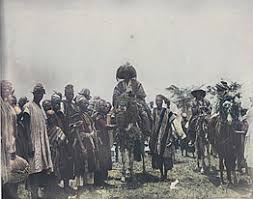
The Oyo Empire
The Oyo Empire was once an influential Yoruba nation in the present-day country of Nigeria and the West African continent. It started in the 1300s in the West African savannah north of the tropical forests, home to different Yoruba people. Oyo shortly grew to turn out to be one of the most effective states in the Yoruba-speaking region. From its capital town at Oyo-Ile, this vulnerable country in the early 1500s, conquered two neighbouring kingdoms, Borgu and Nupe, to come to be the most dominant political entity in the region.
Being in the savannah was beneficial, as Oyo used horses, which were unable to stray farther south (as a result of the tsetse fly). Using this cavalry, the empire was capable of expanding its territory throughout what is now northern and western Nigeria.
Oyo was unable to penetrate the coast, but it built its military and they extended southward to the ocean in Benin. There, Oyo pressured the kingdoms of Allada and Dahomey into subordination which gave the empire gain the right of entry to European trade.
The Oyo Empire, with its capital at Old Oyo close to the Niger River, prospered on regional exchange and grew to be a central facilitator in shifting slaves from Africa indoors to the coast and ready European ships.
The change was so great that this part of Africa grew to be recognized genuinely as the ‘Slave Coast’. The Oyo finally succumbed to the increasing Islamic states to the north, and through the mid-19th century CE, the empire had disintegrated into small rival chiefdoms.
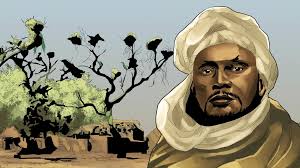
The Sokoto Caliphate
The Sokoto Caliphate in Northern Nigeria was one of the most important empires in the continent throughout the nineteenth century. The Sokoto Caliphate was founded in 1804 by Uthman dan Fodio, who became the first sultan of Sokoto or addressed then as the primary sarkin Musulmi. Though dan Fodio refused to embrace the term Sultan, every one of his successors referred to themselves as the sultan of Sokoto.
Dan Fodio, a Fulani leader and teacher who lived within the Hausa nation of Gobir, initiated the jihad in 1804 when he and his followers were expelled from the town. Following the exile, he started a holy war against the leaders of Gobir and different Hausa town states. Gathering an outsized army of Fulani and Hausa supporters he conquered Gobir and eventually Sokoto, Kano, Katsina, and other major town states.
By 1815, his armies completed their conquests and Uthman dan Fodio’s spiritual empire encompassed most of present-day northern Africa. Dan Fodio’s jihad conjointly influenced the holy wars in close regions and resulted in the creation of Muslim states in African nations, Mali and Chad. The Sokoto Caliphate was conquered by British colonial forces in 1903 and the territory was divided between British, French, and German powers.
While the caliphate was abolished, Britain preserved the unearned position of the Sultan that continues to be recognized in up-to-date Nigeria as an influential religious and spiritual leader.
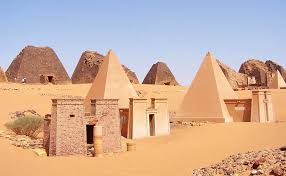
The kingdom of Kush
The Kingdom of Kush was an influential historical nation that existed (twice) in what is now the northern part of Sudan. The 2nd Kingdom lasted from a thousand B.C. till four hundred A.D.
Kerma: The First Kingdom of Kush
The first Kingdom of Kush, additionally recognised as Kerma, is one of the oldest African states outside of Egypt. Kerma arose around 2400 B.C. (during the Egyptian Old Kingdom), and had become the capital of the Kush Kingdom by 2000 B.C.
Kerma-Kush reached its peak between 1750 and 1500 B.C. Kush flourished most when Egypt used to be at its weakest, Kush had gold mines and traded appreciably with its northern neighbours, producing vast wealth and power.
The resurgence of a united Egypt with the 18th Dynasty (1550 to 1295 B.C.) introduced this bronze-age kingdom of Kush to an end.
The Second Kingdom of Kush
Over time, Egyptian manipulation over Nubia declined, and by using the 11th century B.C., the Viceroys of Kush had come to be unbiased kings. During the Egyptian Third Intermediate Period, a new Kushite kingdom emerged, and by way of 730 B.C., Kush had conquered Egypt proper up to the shores of the Mediterranean. The Kushite Pharaoh, Piye ascended the twenty-fifth Dynasty in Egypt.
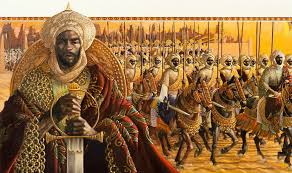
The Empire of Mali
The Empire of Mali was located in Western Africa. It grew along the Niger River and was spread across 1,200 miles from the metropolis of Gao to the Atlantic Ocean. Its northern border used to be south of the Sahara Desert. It included areas of the African nations of Mali, Niger, Senegal, Mauritania, Guinea, and The Gambia.
In the early thirteenth century, the exiled prince, Sundiata Keita “the hungering lion” led a Mande rebel towards the effective Soso king, Sumanguru Kante that marked the ascension of the Mali empire.
It was established by King Sundiata Keita. The kingdom united smaller Malinké Kingdoms close to the Upper Niger River. It had a well-trained, imperial navy and benefiting from being in the centre of exchange routes, Mali improved its territory, influence, and subculture over four centuries.
An abundance of gold and salt deposits helped to grow the empire’s industrial assets. Mali protected the town of Timbuktu, which grew to become acknowledged as an essential core of knowledge. Mali additionally developed into a hub for Islamic belief earlier than bad management leading to the empire’s last decline in strength and influence.
After Sundiata, the most well-known ruler of the Mali empire is Mansa Kankan Musa I, who got to Power a long time after the demise of his legendary predecessor. However, Musa’s hajj (pilgrimage to Mecca) of 1324–25 drew the interest of both the Islamic world and Europeans, who had been unprepared for the lavish wealth and generosity that the Malian king displayed for the duration of his stopover in Egypt.
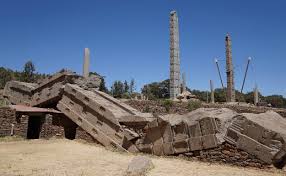
The Kingdom of Aksum
The Kingdom of Aksum used to be a historic kingdom of Africa. It is popularly known as the Kingdom of Axum or Ancient Ethiopia. A principal empire of the historical world, the kingdom of Aksum arose in Ethiopia for the duration of the first century C.E.
This rich African civilization thrived for centuries, controlling a massive territorial nation and getting the right of entry to great alternate routes linking the Roman Empire to the Middle East and India.
Aksum, the capital city, used to be a city with a population of about 20,000. Aksum was noteworthy for its tricky monuments and written script. It was also known for introducing the Christian faith to sub-Saharan Africa.





